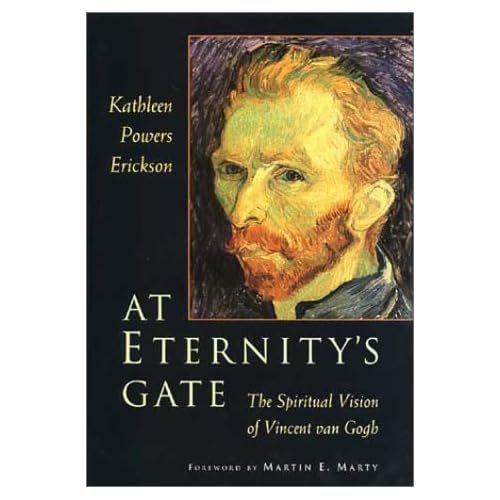At Eternity's Gate: The Spiritual Vision of Vincent Van Gogh
Category: Books,Arts & Photography,History & Criticism
At Eternity's Gate: The Spiritual Vision of Vincent Van Gogh Details
Amazon.com Review Few images in modern art have so captured the attention of the public as Van Gogh's Starry Night, a painting that reveals all the light and glory hidden in an ordinary evening sky. In this very readable study of Van Gogh, essentially a spiritual biography, Kathleen Erickson explores the intense spirituality of the painter, from his early religious training and evangelical missionary work to the crisis that occurred when the church rejected his more radical way of following Christ. Erickson argues (against many Van Gogh scholars) that the artist's mature work reflects not a rejection of Christ so much as a rejection of a dogmatic church, seeing instead in the famous images of his art a profound connection to Christian symbols. Throughout, she helps us to discover the source of the power in Van Gogh's stars and sunflowers. --Doug Thorpe Read more From Publishers Weekly Erickson's account of the spiritual dimensions of van Gogh's work is an important corrective to two widespread assumptions: first, that his background was theologically Calvinist; second, that he abandoned religion when he began his professional career as an artist. Drawing extensively on van Gogh's correspondence, Erickson argues convincingly that the so-called Groningen school?more Arminian than Calvinist?was the foundation for van Gogh's religious outlook and that his abandonment of institutional Christianity (precipitated by disillusionment with his uncle and theological mentor, Johannes Paulus Stricker) was not so much an abandonment of religion as a move to synthesize Christianity and modernity via mysticism. Her discussion of van Gogh's late work is particularly compelling in this regard. Erickson's diagnostic discussion of van Gogh's mental illness is intriguing, though such extended discussion of whether he was epileptic, bipolar, schizophrenic or a combination is more of a distraction than a contribution to artistic or religious appreciation of his work. This work is a lucid and accessible contribution to understanding the religious character of van Gogh's artistic vision. Copyright 1998 Reed Business Information, Inc. Read more

Reviews
Very interesting book, not too much for Van Gogh novices; it is a very scholarly and beautifully researched study. The book deals in detail with his very fervent religious beliefs, his disenchantment with religious orthodoxy. In many ways, Van Gogh's religious feelings were a part of his entire life, not merely his youth, and that religious devotion is the subject of many of his paintings. Van Gogh, incidentally, was not a painter during his missionary period (in spite of that suggestion in the film Lust for Life), and even though he broke with his church's leadership, he often included topics of spiritual devotion in his depictions of the working class. Well-documented with many excerpts from Van Gogh's correspondence. Interesting arguments as well to counter beliefs that Van Gogh's mental health problems were not the result of bi-polar mental illness. The book's purpose is not to analyze his paintings, but as the title certainly suggests, to seek an understanding of his religious journey.


